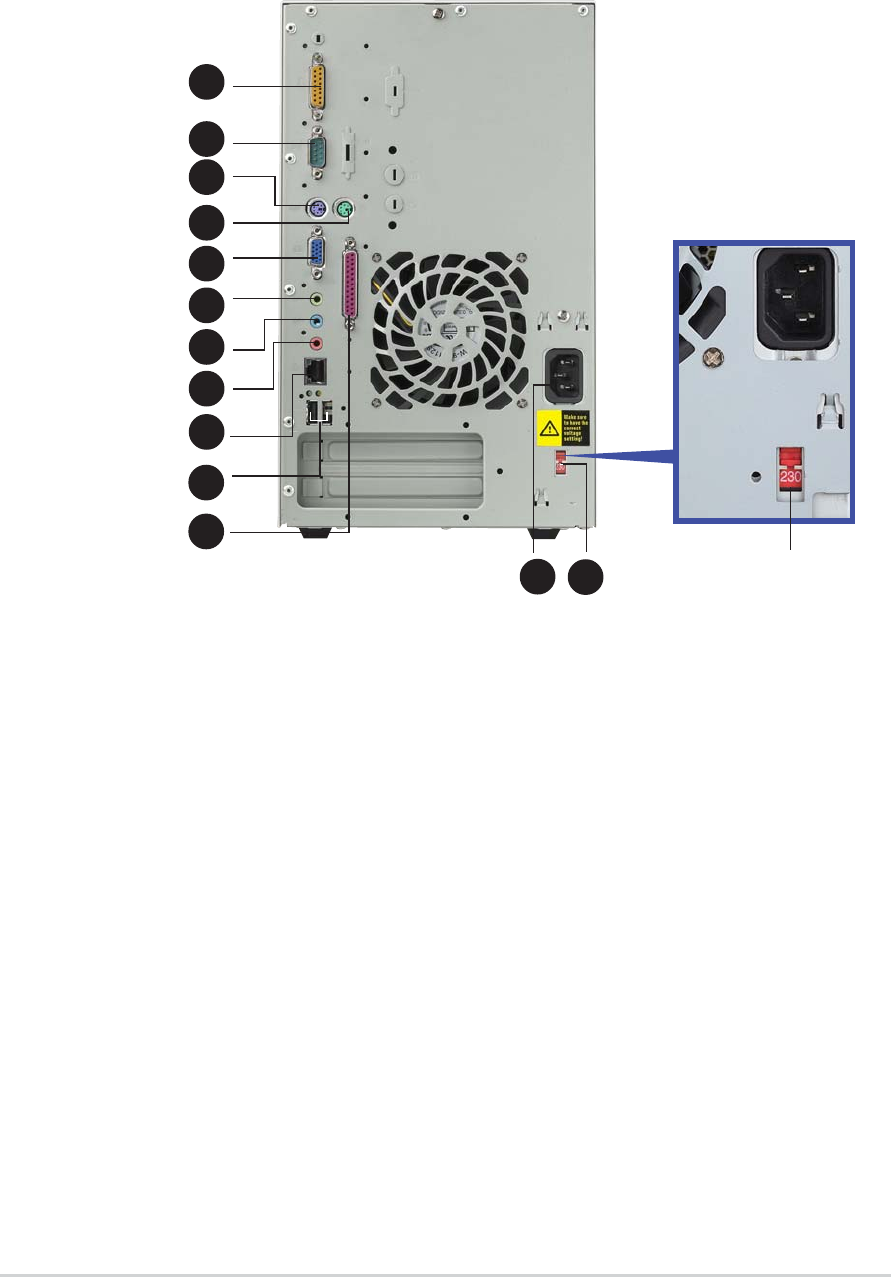
1-41-4
1-41-4
1-4
Chapter 1: System introductionChapter 1: System introduction
Chapter 1: System introductionChapter 1: System introduction
Chapter 1: System introduction
1.3 Rear panel
The system rear panel includes the power socket and several I/O ports that
allow convenient connection of devices.
11
11
1
22
22
2
33
33
3
44
44
4
55
55
5
66
66
6
77
77
7
88
88
8
99
99
9
1010
1010
10
1111
1111
11
12
1.1.
1.1.
1.
GAME/MIDI port.GAME/MIDI port.
GAME/MIDI port.GAME/MIDI port.
GAME/MIDI port. This port connects a joystick or game pad for
playing games, and MIDI devices for audio editing.
2.2.
2.2.
2.
Serial port. Serial port.
Serial port. Serial port.
Serial port. This port connects a mouse, modem, or other devices
that conform with serial specification.
3.3.
3.3.
3.
PS/2 mouse port.PS/2 mouse port.
PS/2 mouse port.PS/2 mouse port.
PS/2 mouse port. This green 6-pin connector is for a PS/2 mouse.
4.4.
4.4.
4.
PS/2 keyboard port.PS/2 keyboard port.
PS/2 keyboard port.PS/2 keyboard port.
PS/2 keyboard port. This purple 6-pin connector is for a PS/2
keyboard.
5.5.
5.5.
5.
VGA port. VGA port.
VGA port. VGA port.
VGA port. This port connects a VGA monitor.
6.6.
6.6.
6.
Line Out port. Line Out port.
Line Out port. Line Out port.
Line Out port. This Line Out (lime) port connects a headphone or a
speaker. In 4/6-channel mode, the function of this port becomes
Front Speaker Out.
7.7.
7.7.
7.
Line In port. Line In port.
Line In port. Line In port.
Line In port. This Line In (light blue) port connects a tape player or
other audio sources. In 6-channel mode, the function of this port
becomes Low Frequency Enhanced Output/Center.
13
115V/230V115V/230V
115V/230V115V/230V
115V/230V
VoltageVoltage
VoltageVoltage
Voltage
selectorselector
selectorselector
selector


















